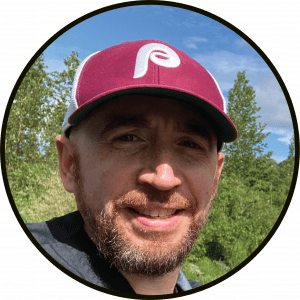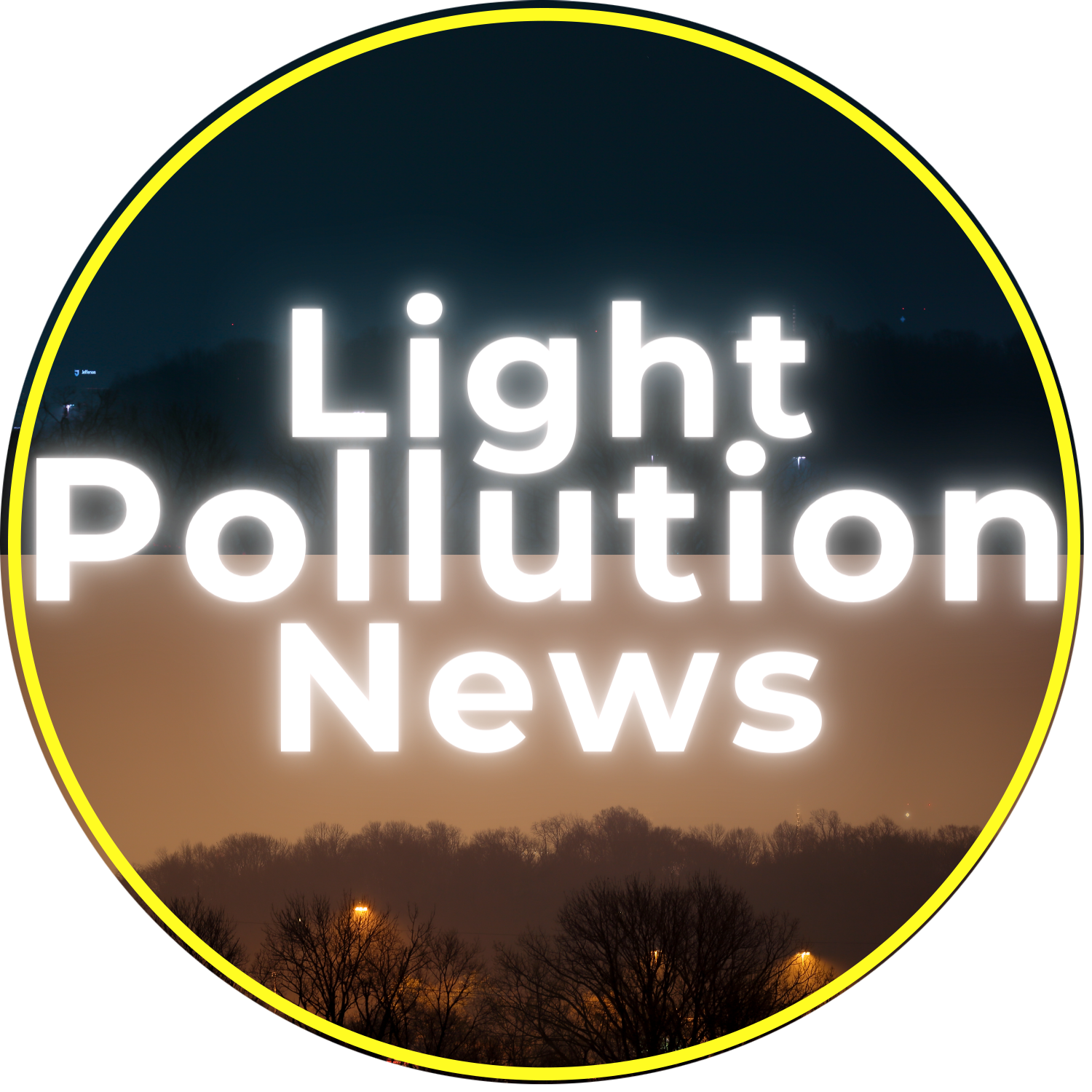
August 2025: Keep Knocking!, Light Pollution News.
Join our mailing list. Follow us at LinkedIn, Instagram, Facebook, & Tiktok.
This Episode:
You do not want to miss this one! We dive into all things ecology with BugLife’s own David Smith! Also, where do we balance nighttime conservation with societal progress?
I welcome back Kelly Beatty, of Sky and Telescope, lighting designer Kerem Asfuroglu of Dark Source, and Buglife’s David Smith!
Find a bogong moth and listen in for an invertebrate driven show this month! And be sure to check out Buglife’s new ‘Don’t Neglect the Night’ campaign!
Like What You See and Hear? Consider Supporting the Show.
A hearty thank you to all of our paid supporters out there. You make this show possible.
For only the cost of one coffee each month, you can help us to continue to grow. That’s $3 a month. If you like what we’re doing, if you think this adds value in any way, why not say thank you by becoming a supporter!
Why Support Light Pollution News?
- Receive quarterly invites to join as a live audience member for recordings with special Q&A sessions post recording with guests.
- Receive all of the news for that month via a special Supporter monthly mailer.
- The satisfaction that your support helps further critical discourse on this topic.
Support Light Pollution News!
Host:

Guests:



Kelly Beatty
Kelly Beatty has been explaining the science and wonder of astronomy to the public since 1974, when he joined the staff of Sky & Telescope. After 44 years of pounding the keyboard, he retired from full-time work in early 2018 but remains actively involved in many S&T articles, tours, and other projects. An award-winning writer and communicator, he holds a Bachelor’s degree from the California Institute of Technology and a Master’s degree in science journalism from Boston University. Kelly has been active in efforts to reduce light pollution for more than 30 years. He served for more than a decade on the Board of Directors for the International Dark-sky Association (darksky.org) and is now an officer with DarkSky’s Massachusetts chapter.
David Smith
David Smith is an award-winning campaigner and environmental advocate. Smith has worked on a range of policy issues, including plastic pollution, water quality, land use change, and species recovery programs. As Social Change and Advocacy Officer at Buglife – the Invertebrate Conservation Trust, Smith leads advocacy and policy work to help save the small things that run the planet. As part of their policy priorities, Buglife is working to ensure that light pollution is recognized as an environmental pollutant with legally binding targets to reduce levels and relieve the pressure light pollution puts on the natural world.
Kerem Asfuroglu
Kerem Asfuroglu is the founder of Dark Source, an award-winning lighting design studio driven by environmental values based in the UK & Ireland. Following his graduation from Wismar University – Architectural Lighting Design MA in 2010, Kerem has worked in the lighting industry for almost a decade before setting up Dark Source in 2019. He has been awarded the title of Dark Sky Defender by the IDA for advocating the importance of darkness through design. Some of his environmental lighting projects include the Plas Y Brenin Outdoor Centre, Presteigne Dark Sky Masterplan, Newport Dark Sky Masterplan, Cloughjordan Ecovillage, Clwydian Range & Dee Valley, and Dark Sky Planning Guidelines for Cumbria.
Full Article List:
- Flying Banana’ traveling 125 mph fires laser into sky and catches aurora hunters off guard (video), Daisy Dobrijevic, Space.com.
- Experts: Lights for new Buc-ee’s exit deadly to baby sea turtles, Lily Belle Poling, GPB.
- Light pollution concern with ‘Alligator Alcatraz’, Richard Kolko, Brianna Lanham, Robin Wolf, WINK.
- Darkness is crucial to Everglades habitat: Could Alligator Alcatraz threaten it?, Max Chesnes, Phys.org.
- A183 Coast Road cycleway to get new street lighting to boost safety despite wildlife and dark skies fears, Nic Marko, Shields Gazette.
- Campaigners fear lamps will ‘destroy night sky’, Gemma Sherlock & Sharuna Sagar, BBC.
- Bill would reverse ban on UP dark sky preserves, Dan Groeneveld, TV6.
- Bogong moths use a stellar compass for long-distance navigation at night, Nature.
- It’s miller moth season in Colorado – an entomologist explains why they’re important and where they’re headed, Ryan St Laurent, The Conversation.
- Bats are a ‘silent signal’ there’s a healthy ecosystem in your yard, says biology professor – he explains why these nocturnal mammals are key biodiversity indicators, Tenielle Jordison, Homes and Gardens.
- Are We Really the Last Generation to Enjoy Twinkling Fireflies in the Summer?, Monica Cull, Discover Magazine.
- Lunar cycle and moonlight intensity influence nocturnal migration patterns in a small songbird, Scientific Reports.
- Birds of a feather flock together: social context exacerbates the effects of light pollution on circadian disruption, Proceedings of the Royal Society B.
- Zebra finches struggle more than robust Bengalese finches with nocturnal light pollution, Journal of Experimental Biology.
- Light Pollution Beyond the Visible: Insights from People’s Perspectives, Urban Science.
- The Closed World – Modified telescope to observe a machine-generated cosmos, Filip, Creativeapplications.net.
Light Pollution News: August Highlights
Mysterious Blue Light Over Oxfordshire
In May 2025, a fast-moving blue light, initially mistaken for an aurora, was captured above Oxfordshire. Known as the “Flying Banana,” this laser-equipped high-speed train is used for track condition mapping but contributes to night sky light pollution.
Light Pollution Threatens Baby Sea Turtles in Georgia
High mast lighting near the new Buc-ee’s exit on I-95 in Georgia causes disorientation among endangered sea turtle hatchlings. The towering, unshielded lights create skyglow that draws turtles inland, increasing mortality rates. The Georgia Department of Transportation is responsible, though relocation to less harmful street lighting is planned
.
“Alligator Alcatraz” and Dark Sky Preservation in the Everglades
A detention center in Collier County, Florida, installed with bright LED lighting, threatens one of the first-ever Dark Sky Preserves. Environmental groups have filed lawsuits citing harm to nocturnal wildlife and habitat degradation due to excessive light pollution.
Innovative Street Lighting for Cyclist Safety Amid Conservation Concerns
South Tyneside Council in England plans to install 10m-high streetlights along A183 Coast Road to improve cycling safety. The design includes shielding and dimming after 10 PM to minimize light trespass and protect nearby natural coastal habitats.
Migratory Nightlife: Moths and Bats
- Bogong Moths (Australia): Navigate via starlight and Earth’s magnetic fields during long migrations.
- Miller Moths (USA): Important nighttime pollinators migrating across the Great Plains.
- Bats: Indicators of ecosystem health, consuming up to 1,200 insects per hour, relying on dark, safe habitats.
Firefly Populations in Decline
Global firefly numbers are drastically falling, with habitat loss and light pollution key factors. This decline threatens the iconic “twinkling” summer nights.
Effects of Artificial Light on Bird Behavior and Physiology
European skylarks show increased migratory activity under full moonlight, suggesting lunar cues aid navigation. However, artificial light disrupts circadian rhythms and metabolism in birds such as zebra finches, causing ecological and health concerns. Conversely, Bengalese finches seem less impacted by dim nighttime lighting.
Bridging the Public–Professional Divide on Light Pollution Understanding
A 2025 survey revealed that the public largely perceives light pollution as a visual issue, while lighting experts highlight serious ecological impacts, particularly from blue LEDs. Effective solutions call for education, policy reforms, improved lighting design, and citizen engagement.
Light Pollution News: August Read Along
Let’s start today with a strange blue light found appearing above the Oxfordshire skies. On May 1st, there was a fast moving blue wave that crossed the sky. An astrophotographer named Mary McIntyre caught the blue wave as she looked for aurora activity. The wave turned out to be something called the ‘Flying Banana,” which is a train that quickly speeds through the night on a mission of mapping track conditions.
As promised, this is a big ecology show. The amount of news about ecology this month was staggering. I want to level set before diving in. News on the environment and how artificial light at night affects, changes, shapes, and creates new environments is, month in and month out, the largest bucket of my news pull. It seems to just keep getting bigger and bigger. And yet, we still have articles like this one…“Lights for new Buc-ee’s exit deadly to baby sea turtles.”
The article title itself is a bit misleading, as yes, Buc-ee’s is the main reason for the lights. However, the lights were put in place by the Georgia Department of Transportation. For you at home who may not be aware of what a Buc-ee’s is, this is a Texas based gas station chain that essentially has a mammoth footprint – including endless gas stalls centered by a very large box store.
The problem is that the lights themselves are these towering, high interchange light masts that can be seen for miles, and now show up as a white wall from the beaches to the east. Biologists with the Georgia Department of Natural Resources’ Wildlife Resources Division found higher than usual numbers of misoriented hatchlings from multiple nests in 2023 and 2024. They are attributing this to the new sky glow.
The Georgia Department of Transit claims that it is using the high mast lighting until new street lights can be installed. I should also note that there may be a future in which the Georgia Department of Transportation works with the DNR to create specialized lighting situations, but at the moment, that isn’t the case.
Before we get into ecology this month, there are two other policy related items that stuck out this month. First, we have what has been dubbed Alligator Alcatraz. Have you guys heard of this?
The US government’s push to extricate illegal immigration has moved to the Everglades. Specifically, the Department of Homeland Security, along with our good buddy, Governor Ron DeSantis, is setting up a peacetime detention facility for illegal immigrants on an old airport in Collier County, Florida, known by critics as “Alligator Alcatraz.” You’ll recall, Governor DeSantis signed a bill that would require mandatory exterior lighting for all apartment facilities in the state a couple of years back, codifying what undoubtedly became a new wave of terrible lighting practices.
In this latest, careless attack on the night, the facility appears to have quickly wired up some bright LED fixtures to lead to a “Yankee Stadium” like glow…whatever that means. The problem, though, is most apparent when the land for which the detention center has been constructed is viewed through its 2016 Dark Sky International designation as the first ‘Dark Sky Preserve.’ There is an ongoing fight with a recent lawsuit filed by the Friends of the Everglades and the Center for Biological Diversity. Given the court’s seemingly unfettered drive to expand executive power and considering national security falls within the purview of the executive, I imagine, nothing much will come of it.
Lastly, on the policy front, this is an interesting one. As someone who bikes thousands of miles a year, I can’t say I fully understand the safety argument much. We all have bike lights these days that are every bit as powerful as a car headlight and cost pretty much nothing. I’m highly suspicious of any additional benefit that might derive from a top level streetlight is diminishing – but, sure, whatever.
We spoke about this story a while back, and now the South Tyneside Council has officially decided, yes, it’s time to light up a stretch of the A183 Coast road with explicit designs on improving cyclability. Community members appear to be pretty distraught at a design to install 10m (32ft) high streetlights on a scenic stretch of road. They worry about light pollution and light trespass.
To the Councilors’ credit, the plan is to install the lights in a way that utilizes shielding and poles to cut down on light trespass. In addition, the lighting plan is to be cut by 50% brightness after 10 pm. The lights will be placed adjacent to the Leas, which is a cliffy natural area in South Shields, England.
On the topic of NIMBYism, if Dark Skies are ever truly going to take hold on a large scale, it’s going to have to prove that Dark Sky designated spaces can be spaces that support industry activities. I found this quote quite telling of the next major hurdle for nighttime advocates. Per TV6 in Michigan, State Senator Ed McBroom echoed concerns of industry, stating that they should uphold a ban that is currently in place on all Upper Peninsula Dark Sky designations. McBroom said, “They try anything they can to get a whole area designated with some sort of additional label just to make mining that much more difficult.”
This is a big ecology show. We have so much to talk about in this space. I’m going to start with a story that got a good bit of mileage – there are these moths in Australia called Bogong moths that look fuzzy and brown, and are shaped to what I would consider a normal moth shape to be. From Nature, these moths migrate, sometimes, to places 1,000 km away. And they do so by the use of starlight and the Earth’s magnetic field.
Since we’re on the topic of moths and nighttime pollinators, did you at home know that North America also has an impressive moth migration? This one takes place in the Great Plains of the US. The miller moth, a large brown moth, starts out in the flat lands of Colorado, Wyoming, Kansas, and Nebraska before making its nighttime voyage over 100 miles west to seek out the nectar of higher elevation plants.
We have this story that came through Homes and Gardens that makes the case for bats being a key indicator of a healthy yard’s ecosystem. The article asserts that healthy yards are adjacent to high quality water sources, which in turn grows the insect population, and allows for bats to successfully feed and grow populations. In addition, there are safe and dark nesting areas nearby.
Now, on the latter topic of nighttime darkness, there are some bats, as we’ve talked previously on here, that are more opportunistic with regards to utilizing yard lighting to their hunting advantage, but there are many that are turned off by light at night – though all bats are avoidant of nighttime light.
Bats can consume upwards of 1200 insects an hour. That’s a pretty good ally in my book!
Before we jump away from insects, David, I want to get your take on this. There’s been a lot in the news about us living in a time when we might be collectively among the last groups of people to see fireflies. This apparently was driven by social media, shocker, and is rooted in something we talked about back in 2024 – namely, a couple of news items involving firefly count declines, including the Bethany Beach firefly, which was big news in our November episodes.
Switching over to birds, for which we have a few articles that came in this month, first, it appears that some songbirds actually prefer to have light when migrating. Traps set to lure European skylarks garnered the most activity on full moon nights. This experiment took place over the course of three years, from 2018 to 2020, northwest of Munster, Germany.
Authors are not entirely confident about what to make of this. Surmising it could mean that the skylark migrates more heavily on fuller moon nights – thereby possibly utilizing the light to its navigation advantage somehow, or actually orient itself based on the moon. Another thought derived from how swifts obtain higher flight altitudes under fuller moons, that is, perhaps the birds adjusted the altitude of their flight based on the moonlight. And, we already know that birds tend to extend their daytime activities in areas with artificial light. Due to this, artificial light at night has been shown to weaken hatchling success, it’s been indicated as a source of cognitive degradation for some birds, and now from a study in the Proceedings of the Royal Society B, zebra finches were shown when isolated and when grouped together, to have increased nighttime activity when experiencing low levels of artificial light at night.
The study looked at how birds’ behavioral, physiological, and molecular rhythms changed. It found that the birds partially acclimated over 10 days but retained gene expressions that indicated persistent circadian rhythm disruptions.
Lastly, as we established, zebra finches are impacted by artificial light at night, though Bengalese finches don’t seem to have much of a problem at all! In a study in the Journal of Experimental Biology, Bengalese finches maintained a healthy gut microbiome and stable metabolism under dim levels of artificial light at night. Zebra finches appeared to have difficulty regulating their metabolism and, hence, body temperature. Their gut microbiome also appeared to experience inflammation.
Ok, well, that’s a lot of ecology news. There’s even more over at our website. We had something like 42 news and research articles that came through this month. I didn’t touch on any of the marine news this month.
Moving out of the world of ecology, this one is interesting. From the journal of Urban Science, researchers attempted to build a wholesome view of what exactly the term and idea of light pollution is. The authors harvested from their literature review and used this as a guide to build a survey to quiz a total of 406 respondents, including 326 folks classified as ‘general public’ and 80 classified as ‘lighting experts,’ ie, presumably paid practitioners to some degree.
The survey results found that there is a sharp divide between the public and professionals over what light pollution is. The public, and I’d argue most public officials I’ve met in my life, including those who work in public adjacent spaces – like, for instance, members of the greenway alliances- understand light pollution to be a visual or aesthetic issue, largely dismissive of any of the impacts we have spoken about here today. On the flip side, professional individuals largely recognize these impacts and additionally cite an overuse of blue light LEDs.
The authors suggest the following to bridge the divide:
- Educate the public.
- Enact policy changes.
- Advocate for smarter lighting practices (shielding, warmer colors, etc).
- Citizen engagement for the long game.
Let’s finish today out with this – a telescope built to showcase a simulated universe. The telescope, which looks to be your standard generic small refractor telescope, has been converted into a cyborg. The project called ‘the Closed World’ is the brainchild of Julian Oliver. It’s as Julian describes, a “telescope modified to look upon a machine-generated cosmos.”
The telescope, featured last month on the website Creative Applications – a site that showcases the creative talents of designers, artists, and engineers. The telescope is essentially a refractor that’s been fitted with a raspberry pi and digital screen. It still looks like a normal telescope, but if you stare inside from the end, you’ll see wires and chips below the glass.
The telescope is equipped with a 50mm bi-convex lens, which magnifies a high resolution display. It utilizes an accelerometer to provide tilt realism. And it includes its own 3d mapping of a digital universe. The one picture result that is shown has what looks like numerous white stars, some red stars (which look akin to hot pixels), and a sea of background stars with nebulous dust.
Very cool little art project!

